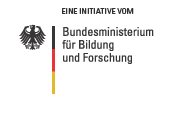Anna Dubrovska: A passion for art and cancer genes
-
 <ic:message key='Bild vergrößern' />
<ic:message key='Bild vergrößern' />
- At the OncoRay Centre for Research in Oncology in Dresden, Anna Dubrovska dreams of developing a biomarker for aggressive tumour cells. Quelle: Anna Dubrovska
13.06.2012 -
Sweden, San Diego, and now Dresden – Anna Dubrovska has seen a lot of the world. For the past eight months the 38-year-old Junior Professor has been leading a young research group at Dresden’s National Centre for Radiation Research in Oncology, a centre of innovation that is currently undergoing expansion. The research into cancer biomarkers is being supported with a five-year €3.1 million grant by the Federal Ministry of Education and Research (BMBF).
When one hears that Anna Dubrovska was born near the Ukrainian capital Kiev, many would make a quick connection with the field of oncology – since the Chernobyl disaster there has been a surge in the number of leukaemia cases both here and in neighbouring Belarus. Anna Dubrovska’s mother died of cancer. "I think that also provides a great amount of personal motivation. By any means, finding a treatment for cancer is one of medicine’s most important missions." However, when she speaks about her work group at Dresden’s OncoRay Research Centre, she not only speaks with a great amount of energy and determination, she also clearly loves her job. "My dream was to develop biomarkers for aggressive tumour cells – and now I finally have the chance to do it!"
Philadelphia and in-vivo models
Dubrovska studied genetics in Kiev and wrote her dissertation on the development of chronic myelogenous leukaemia (CML). She wanted to understand what mechanism is responsible for the elevation of white blood cells. A genetic abnormality was discovered as the cause back in 1960. Later, the young scientist took a much closer look at the chromosome and proved that it was the result of a translocation: a portion of the ninth chromosome switches places with one on the twenty-second. In the "Philadelphia chromosome", named after the location of its discovery, the genes of both chromosomes fused into a new gene. "This is a fusion of the genes into a BCR-ABL oncogene," Dubrovska explains. "This oncogene discovered in 1960 was the first cytogenetic biomarker for cancer." Even back then, the seed was planted for her to be able to one day direct her own project on cancer biomarkers.
| OncoRay |
| Additional information about the Research Centre for Oncology in Dresden can be found on the OncoRay website: click here |
After graduating the gene technician was given the opportunity to travel to Sweden for a research trip. "That was really exciting," she says. "I had the possibility to conduct comparative and comprehensive research on all tumour stem cells using a proteomic approach." It was here at the latest that her desire for a research project on biomarkers became fully-fledged. However, she recognised there was a gap in her knowledge: "I still needed to learn how to identify cancer tumour genes and therapies, how to treat them using high-throughput screening, as well as how to validate these using in-vivo models," Dubrovska continues. "That was important so that I could conduct my own studies." For this reason, she took advantage of a four and a half-year research stay in San Diego before coming to Dresden.
Longing for Europe
"I was longing to return to Europe – and of course to Germany, the leader in European science," she says. The 'Biomarkers for Individualised Radiation Oncology' workgroup at the OncoRay Research Centre is a dream come true for the 38-year-old Junior Professor. The Ukrainian-Romanian-German team, with English as their working language, is made up of another five scientists, including Dubrovska’s husband Vasyl Lukyanchuk. "He is an experienced molecular biologist and is thus very important for our work," says Dubrovska.
| More on this subject on biotechnologie.de |
| News: Cancer specialist Sividon: Predicting treatment success |
Within the next five years and with the assistance of the BMBF funding, she and her team want to identify specific biomarkers for tumour stem cells and find chemical molecules that destroy the cancer stem cell populations in tumours. She knows from stem cell models that a tumour can always grow anew or can metastasise as long as the stem cells aren’t destroyed. "Furthermore, we have increasing numbers of indications that biomarkers can assist in identifying radiation-resistant cell populations," Dubrovska explains. "Thus biomarkers could also be used to forecast the effectiveness of radiation therapy."
This would be one step closer towards more individualised treatments, which she hopes to introduce in preclinical studies. There will also be a laboratory move during this time, as the interdisciplinary OncoRay platform that began work in 2005 will be moving into a new research building that is scheduled to be completed in 2014. Dubrovska excitedly rattles down a list of additional equipment she will be able to work with, including equipment for high-throughput screening and cell imaging. Most important, however, is the additional space. "We spend a lot of energy at the moment in creating a comfortable working atmosphere," she relates. The work atmosphere in the lab is important to her. "My colleagues are like my family."
And if you can’t find her in the laboratory, Dubrovska might be out and about in Dresden’s many art galleries. Asked about her new home, she raves about the city. "This is a really amazing city," she says. "I am so impressed by the cultural and architectural heritage that I’ve started to find out more about Dresden’s history. I feel somehow that I will now become a part of this history."
Author: Cornelia Kästner


